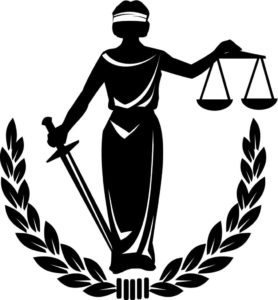“I AM” – Blasphemy or the Truth?
Great Hebrew significance of “I AM” goes all the way back to Moses and the unconsumed, burning bush. Curiosity had drawn Moses closer to the bush when a Voice called him by name.
Moses ventured to ask who was speaking. The Voice responded:
EX 3:6 “I am the God of your father, the God of Abraham, the God of Isaac, and the God of Jacob.” (The Complete Jewish Bible, NASB)
“The Voice” identified Himself as “God,” translated from ‘elohiym, the Hebrew plural masculine word meaning “God, divine ones, rulers, judges.”[1] (Translators added the preceding “I am” only as a clarifying literary aide.)
Commanded to return to Egypt and confront Pharaoh, Moses asked what he should say if anyone asked who sent him? Resoundingly, the presumably booming Voice declared:
EX 3:14-15 “I AM WHO I AM” [hayah/havah]; and He said, “Thus you shall say to the sons of Israel, ‘I AM’ [hayah/havah] has sent me to you.” God [‘elohiym] furthermore, said to Moses, “Thus you shall say to the sons of Israel, ‘The LORD [YHVH], the God of your fathers, the God of Abraham, the God of Isaac, and the God of Jacob, has sent me to you.’ This is My name forever, and this is My memorial-name to all generations.”(NASB)
God emphatically identified Himself with the name hayah or havah meaning “I will be,” according to Jewish sage Rabbi Rashi. Translated into English as “I AM,” hayah is an on-going action verb defined as “to exist i.e. to be or become, come to pass (always emphatic).”[2]
Exodus 3:15 says God specifically gave His proper name as YHVH, the four letter ineffable Hebrew name of God known as the “Tetragrammaton.” Rashi expounded that the 4-letter Hebrew Name is not intended to be spoken.[3]
YHVH in Exodus is translated into English as “The LORD” in place of the unspeakable Divine Name. In other Biblical references, the name is translated as Jehovah, God (‘elohiym), or Adonai.[4]
In the Biblical backdrop for the offense, the son of an Egyptian father and Israelite mother had been apprehended for blasphemy. In the first and only documented judgement for blasphemy in the Old Testament, the Tanakh, the son was judged by God Himself through Moses and was stoned.[5]
LV 24:16 “Moreover, the one who blasphemes the name of the LORD shall surely be put to death; all the congregation shall certainly stone him. The alien as well as the native, when he blasphemes the Name, shall be put to death.”(NASB)
Many centuries later, the legal question was addressed in the Babylonian Talmud.
MISHNAH: “The blasphemer is punished only if he utters the [The Divine] Name.” (Soncino Talmud)[6]
Jewish Rabbi sages further discussed the act of blasphemy in a Gemara. According to the Talmud, the forbidden act could also include cursing, piercing or incorrectly blessing His Name.[7]
Special rules in a blasphemy trial prohibited witnesses from quoting the blasphemy; instead, the court was to use the substitute name of “Jose.”[8] Only one witness was allowed to quote the blasphemy and all others were to simply say if they agreed with what they heard.
Jewish translators of the Hebrew-to-Greek Septuagint LXX completed in 247 BC translated the Exodus text of both “I AM” and “The LORD” into Greek as “ego eimi.”[9]
Ego is a primary first person pronoun to be pronounced emphatically.[10] Eimi, also to be said emphatically, is “the first person singular present indicative meaning “exist’” with characteristics of present and future tenses.[11]
A year earlier, some Pharisees believed they had heard Jesus commit blasphemy. While teaching at the Temple, several times Jesus referred to himself as ego eimi:
JN 8:12 “…I AM the light of the world…” (Jubliee)[12]
JN 8:24 “…unless you believe that I AM, you’ll die in your sins.”(ISV)[13]
JN 8:28 “When you have lifted up the Son of Man, then you will know that I AM…”(ISV)[14]
Continuing this dialog, these Pharisees accused Jesus of being possessed by a demon after he said, “If anyone keeps My word, he will never taste of death.”[15] They aptly pointed out that Abraham and the prophets had surely kept God’s word yet they were dead.[16]
JN 8:56-58 “Your father Abraham rejoiced to see My day, and he saw it and was glad.” Then the Jews said to Him, “You are not yet fifty years old, and have You seen Abraham?” Jesus said to them, “Most assuredly, I say to you, before Abraham was, I AM.”(NKJV)[17]
In one of the most astonishing statements in all the Gospels, Jesus said he saw and heard Abraham rejoice when the day of Jesus had arrived. Incredibly, Jesus explicitly said, “Before Abraham was, I AM” – ego eimi.
Believing they had undoubtedly heard a blasphemy, the Pharisees picked up stones to kill Jesus. According to John, it was not yet his time and Jesus escaped unharmed.[18]
In the aberrant trial, High Priest Caiaphas asked Jesus of Nazareth a direct question, “’Are you the Messiah, the Son of the Blessed One?’ Under oath, Jesus answered ‘I Am.’”[19]
Jesus answered Caiaphas using these very same two Greek words, ego eimi. In essence, Jesus declared emphatically and authoritatively as a statement of fact: “I AM.” i.e “I exist.”
To Caiaphas and other Jewish leaders, it was self-incriminating prima facie evidence – standalone proof – of blasphemy, a capital offense punishable by death.

Upon hearing a blasphemy, a judge was to rend his garment, a Jewish sign of displaying heart-rending anguish or mourning.[20] It was the exact reaction of Caiaphas when he heard Jesus answer, “I Am.”
Facts of the case are undisputed – under oath Jesus identified himself as I AM, the Son of God. What remains is the open question: did Jesus speak a blasphemy or the truth?
If Jesus spoke blasphemy, his death sentence was truly justified according to God’s own Law pursuant to the law of blasphemy. If Jesus is the Son of God, he could not have spoken a blasphemy and was unjustly judged in the place.
Perhaps the greatest paradox of all time, at the Passover in the House of God Jesus declared himself to be the Son of God – a blasphemy or the truth?
Updated March 9, 2025.

This work is licensed under a Creative Commons Attribution-NonCommercial-NoDerivatives 4.0 International License .
REFERENCES:
NASB = New American Standard Bible translation
ISV = International Standard Version translation
NIV = New International Version translation
NKJV = New King James Version translation
[1] “<H0430>”Lexicon-Concordance Online Bible. n.d. <http://lexiconcordance.com>
[2] Net.bible.org. Hebrew text. Strong, James. The New Strong’s Exhaustive Concordance of the Bible. 1990.“hayah <1961>.” The Complete Jewish Bible with Rashi Commentary. 2018. Shemot – Exodus 3:14 translation & commentary. <http://www.chabad.org/library/bible_cdo/aid/9864#showrashi=true> “exist;” “be/” “become,” “transitive.” Merriam-Webster. 2018. <http://www.merriam-webster.com> “<H1961>”Lexicon-Concordance Online Bible. n.d. <http://lexiconcordance.com>
[3] Rashi. The Complete Jewish Bible with Rashi Commentary. Shemot – Exodus 3:15 commentary. Benner, Jeff, The Ancient Hebrew Alphabet. 2017. “vav.” <http://www.ancient-hebrew.org/alphabet_letters_vav.html> Exodus 3:15. BibleHub.com. lexicon. n.d. <https://biblehub.com/lexicon/exodus/3-15.htm>
[4] Soncino Babylonian Talmud. Sanhedrin 55b & footnote #20, 56a. Martincic, Tom. “The Meaning of the Tetragrammaton.” Eliyah.com. n.d. <http://www.eliyah.com/tetragrm.html> “Tetragrammaton.” Dictionary.com. <http://dictionary.reference.com/browse/tetragrammaton?s=t> Marlowe, Michael. The Translation of the Tetragrammaton.” Bible Research. 2011. <http://www.bible-researcher.com/tetragrammaton.html> “Tetragrammation.” Jewish Encyclopedia. 2011. <http://www.jewishencyclopedia.com/articles/14346-tetragrammaton> Singer, Isidore; Adler, Cyrus, et. al. The Jewish Encyclopedia. Volume 9. 1912. “The Seven Names.” p 163. <https://books.google.com/books?id=lfoOtGOcIBYC&lpg=PA594&ots=6qoCfVVUz7&dq=wave+sheaf+encyclopedia&pg=PA594&hl=en#v=onepage&q=seven&f=false>
[5] Leviticus 24:13-15, 23.
[6] Soncino Babylonian Talmud. Ed. Isidore Epstein. Sanhedrin 55b (continues through 56a) <http://come-and-hear.com/tcontents.html> CR Deuteronomy 5:11.
[7] Soncino Babylonian Talmud. Sanhedrin 56a, 66a. The Babylonian Talmud. Rodkinson translation. Book 8, Tract Sanhedrin, Chapter VII, Mishna VI. <http://www.sacred-texts.com/jud/talmud.htm>
[8] Soncino Babylonian Talmud. Sanhedrin 56a, 66a.
[9] NetBible.com. Exodus 3:6 – Septuagint text; Hebrew text Myhlah <403>, ‘elohiym, the plural form of ‘elowahh <0433>. Biblehub.com. Exodus 3:6 Hebrew ’ĕ-lō-hê <403>, plural form of eloah. Josephus, Flavius. Antiquities of the Jews. Book XII, Chapter II.1-6, 13-1. Trans. William Whitson. The Complete Works of Josephus. 1850. <http://books.google.com/books?id=e0dAAAAAMAAJ&printsec=frontcover&source=gbs_ge_summary_r&cad=0#v=onepage&q&f=false> “I AM.” Names For God. n.d. <https://namesforgod.net/i-am>
[10] Net.bible.org. Luke 22:70, Greek text. Strong. “ego <1473> The New Strong’s Exhaustive Concordance of the Bible.
[11] Net.bible.org. Luke 22:70, Greek text. Strong. “eimi <1510>” The New Strong’s Exhaustive Concordance of the Bible
[12] BibleHub.com. <http://biblehub.com/commentaries/jfb/john/8.htm>
[13] Gill’s Exposition. John 8:24. BibleHub.com. <http://biblehub.com/commentaries/gill/john/8.htm> Cambridge Bible for Schools and Colleges. John 8:24. BibleHub.com. <http://biblehub.com/commentaries/cambridge/john/8.htm> Wesley’s Notes on the Bible. John 8:24. BibleHub.com. <http://biblehub.com/commentaries/wes/john/8.htm>
[14] Wesley’s Notes on the Bible. John 8:28. Cambridge Bible for Schools and Colleges.
[15] NASB. John 8:52.
[16] John 8:52-55.
[17] Gill’s Exposition. John 8:58. Cambridge Bible for Schools and Colleges. John 8:58. Jamieson-Fausset-Brown Bible Commentary. John 8:58. Wesley’s Notes on the Bible. John 8:58.
[18] John 8:59.
[19] NASB. Luke 22:67-71. CR Matthew 26:63-65; Mark 14-63-65.
[20] Lamm, Maurice. “Keriah – The Rending of Garments.” Chabad.org. 2018. <http://www.chabad.org/library/article_cdo/aid/281558/jewish/Keriah-The-Rending-of-Garments.htm>
